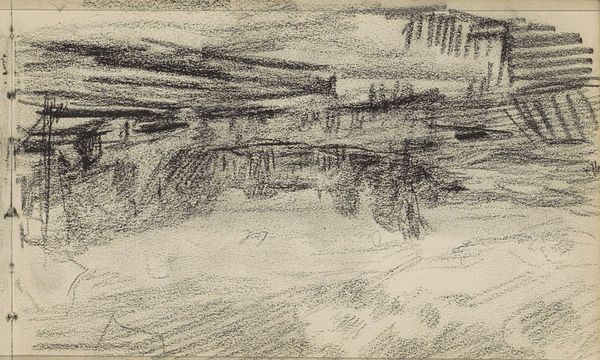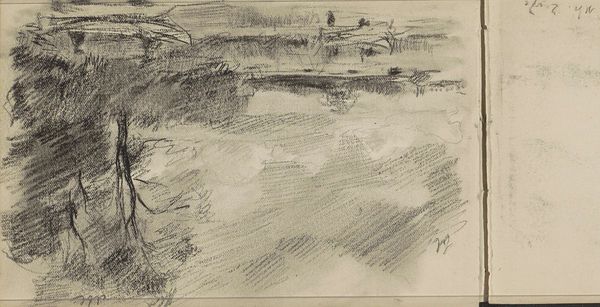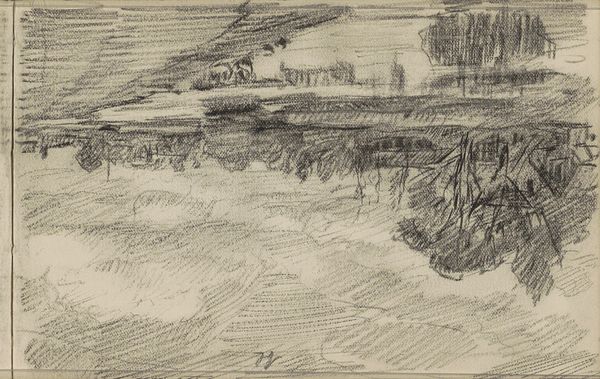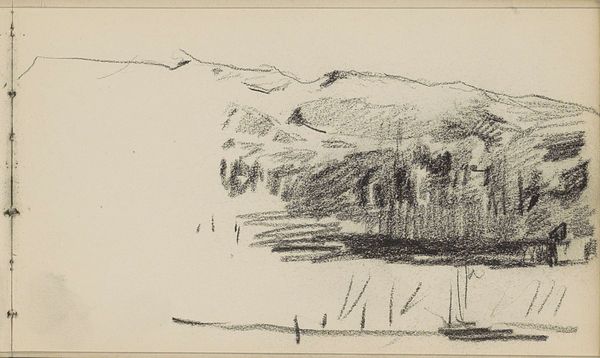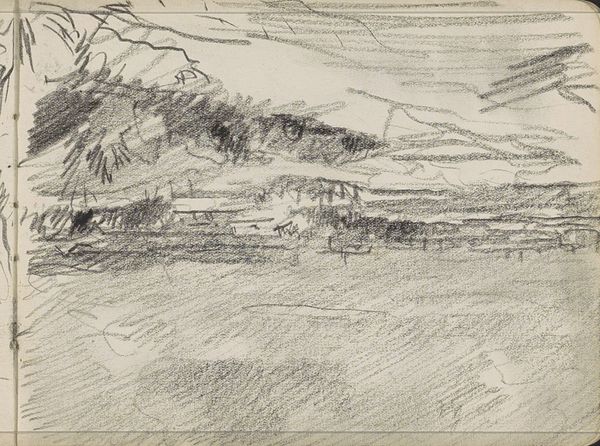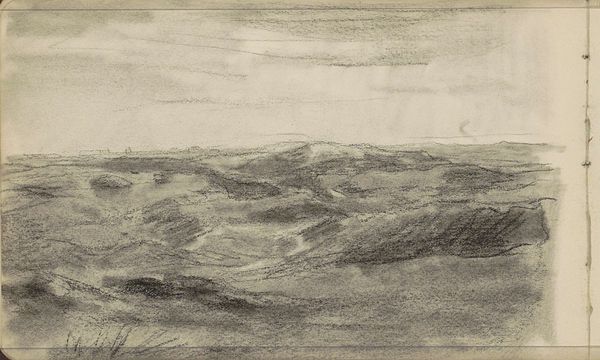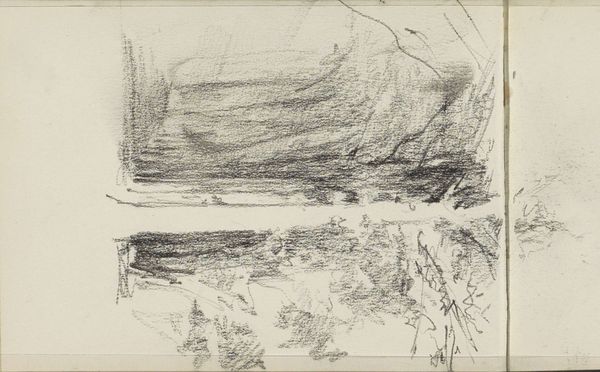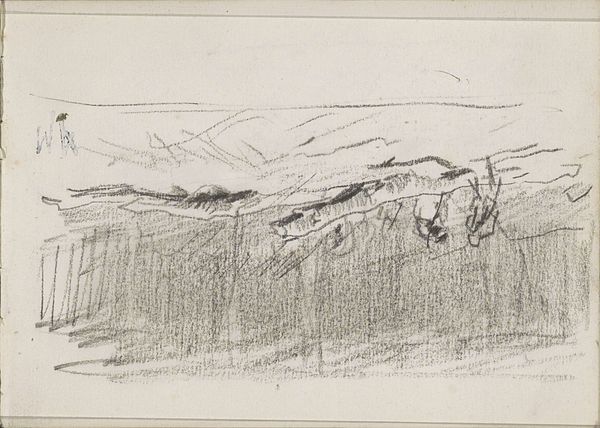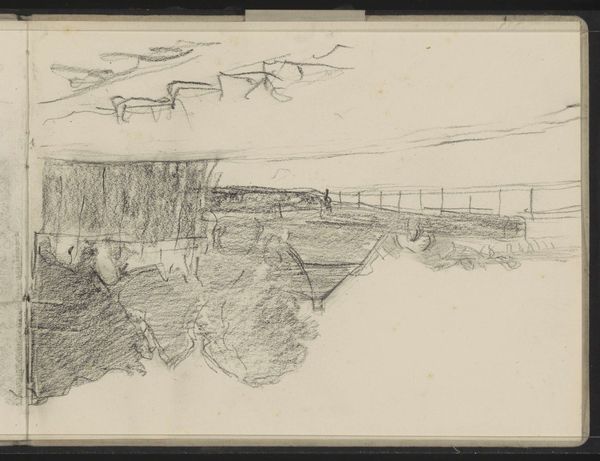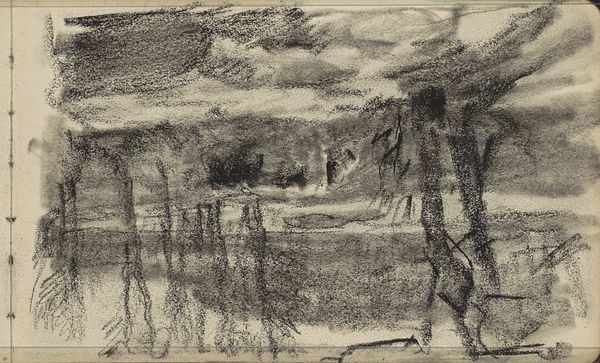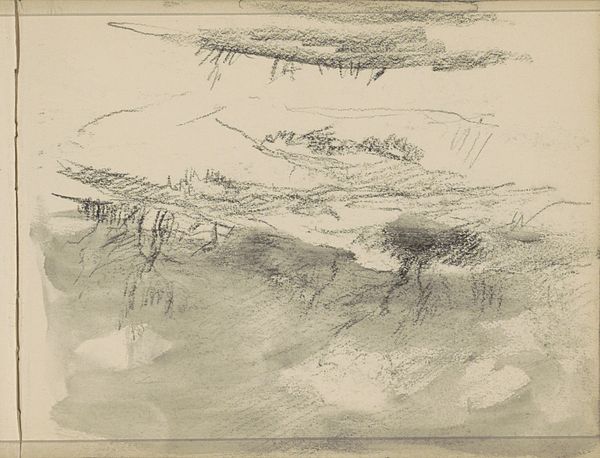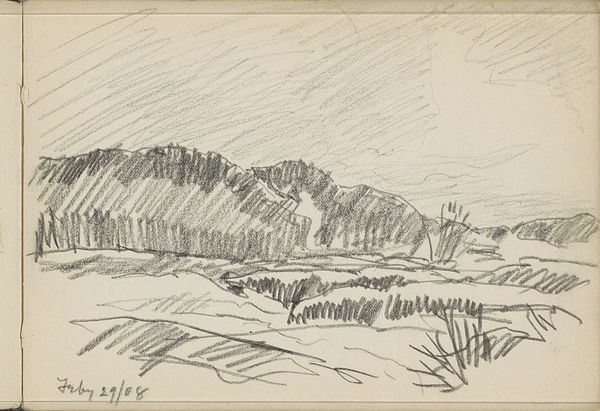
Copyright: Rijks Museum: Open Domain
Curator: Here we have Johan Antonie de Jonge's "Rivierlandschap met gebouwen," or "Riverside landscape with buildings." Created sometime between 1881 and 1927, this drawing uses pencil on paper to capture a waterside scene. What are your first impressions? Editor: Dark. It’s almost aggressively shadowed. The marks feel very hurried, conveying a sense of urgency, almost anxiety. I’m drawn to the roofline that peeks through. Curator: That sense of darkness might reflect a wider trend of the era, particularly towards the end of that production window, perhaps mirroring growing anxieties as the world moved towards conflict in the early 20th century, away from a sort of golden age. Editor: Interesting. To me, that hurriedness speaks to the act of sketching itself—the immediacy, the rapid capturing of a scene before it changes. Notice how the heavy application of pencil suggests texture, especially in the vegetation, almost like an Impressionistic rendering through line alone. Curator: Exactly! This sketch allows us to consider how the changing urban landscape in Europe started influencing how artists perceived and presented natural landscapes. The hurried nature of the strokes reflects a quickening pace of life, of documenting fleeting moments. Editor: I see how those cultural shifts may reflect the work. Though formally, the strategic arrangement of the dark shading and blank spaces structures the scene. Our eyes are directed horizontally by the rooftops which gives the work balance amid that pervasive dark tone. Curator: True, it highlights how art functioned both as a reflector of contemporary concerns, and a method of negotiating societal perceptions. Think of sketch clubs—artist gatherings became hubs of discussion and reflection. De Jonge was, through his work, actively participating in that public forum. Editor: The very act of using pencil and paper contributes to the sketch-like effect too. It's almost unfinished. Curator: Which speaks to this drawing's place within society: not necessarily a finished work for public consumption, but documentation and preliminary exploration for something larger, playing a part in artistic dialogue rather than dictating it. Editor: In sum, the drawing encapsulates so many elements: its formal qualities enhance an active process of record, one interwoven within a rich tapestry of cultural exchanges and emerging techniques. Curator: Precisely, revealing layers that reflect back both personal intent and broader historical currents.
Comments
No comments
Be the first to comment and join the conversation on the ultimate creative platform.
